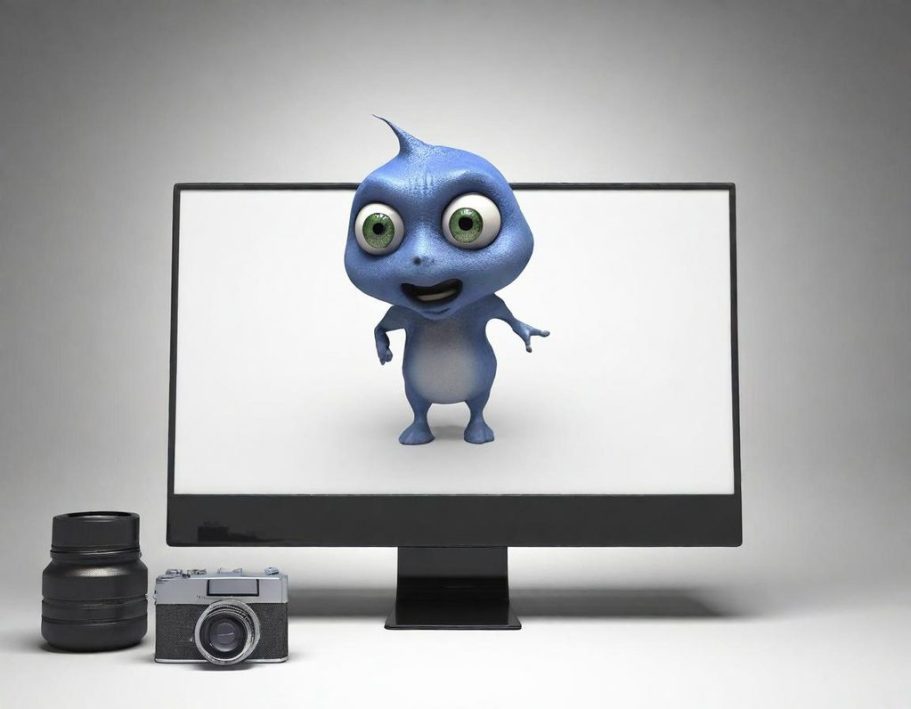Vibe's Pop Corner
Yolo Rizz Vibe’s reporting columns are your go-to source for all things pop culture, blending fresh trends, music, fashion, and viral moments with a vibrant, authentic vibe. With a keen eye for the latest TikTok dances, streetwear drops, and global phenomena, Vibe delivers sharp, engaging insights sprinkled with personal flair and real talk. Whether it’s breaking down the hottest trends or sharing exclusive interviews, Vibe’s columns are designed to keep you in the know and vibing high, all while serving up a little brainrot-style fun.

Goop Monster Sitting In Front Of A Monitor With A Camera Facing It #2 - by Getty AI
Vibe Check: The Rise of VTubers — Digital Idols, Deep Questions, and the Future of Internet Culture
By Y.R. Vibe, Pop Culture Reporter for Sans Cerebrum News
Yo, what’s good, Vibe fam! Yolo Rizz Vibe here, diving deep into a phenomenon that's been taking the internet by storm — the wild, colorful world of VTubers. If you’ve been seeing those animated streamers with the cute, sometimes bizarre avatars, and wondered what’s really going on behind all that digital glam, buckle up — we’re about to break it down.
The VTuber craze started gaining serious momentum around the late 2010s, but it exploded into mainstream consciousness with big players like Hololive and Nijisanji leading the charge. Hololive, with stars like Gawr Gura and Mori Calliope, has built a massive empire of virtual talents who stream, sing, and interact with fans worldwide. Nijisanji isn’t far behind, offering a broader range of personalities and styles that cater to every niche. Then there are indie VTubers — the bit players — who compete by bringing raw authenticity, quirky humor, and niche content to the table, often building tight-knit communities through Patreon, Twitter, and Discord. It’s a digital ecosystem where personality, creativity, and relatability are currency, and the competition is fierce but friendly.
Now, here’s where it gets deep — some folks compare the VTuber scene to the trolley problem. Think about it: these virtual idols are avatars with layered identities, and their interactions with fans often raise questions about authenticity, escapism, and the ethics of digital personas. Are they real? Do we owe them loyalty? Or are they just pixels and voice actors? It’s kind of like a philosophical mind bender — and honestly, if this whole scene was a cat video, it would be the peanut butter and jelly of the internet: adorable, addictive, and impossible to ignore.
So, who are the enjoyers? Mostly a global mix of anime fans, gamers, and people craving community and escapism. They tune in for the entertainment, the vibes, and the sense of connection — especially during times when real-life interaction feels limited. Should you dive in? That depends — but if you’re into subcultures that blend tech, creativity, and fandom, it’s a world worth exploring. It’s like peeking behind the curtain of digital identity and seeing the future of entertainment unfold.
For me, the biggest draw is the sheer innovation — how these virtual stars create immersive experiences and foster genuine fan relationships. It’s a whole new form of celebrity, where the avatar’s personality can evolve, and fans become part of the story. Plus, it’s just mad entertaining watching someone’s pixelated alter ego slay a karaoke session or crack a joke.
Until next time, stay vibey and keep your eyes open — the world of VTubers is just getting started, and it’s got that perfect mix of tech, art, and internet culture that’s impossible to resist. Peace!
